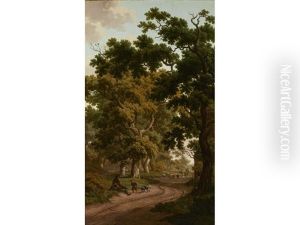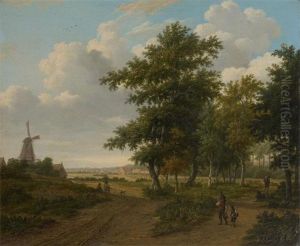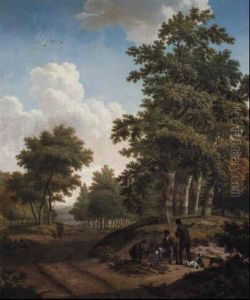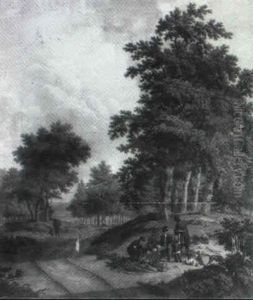Willem Uppink Paintings
Willem Uppink was a Dutch painter born in Amsterdam in the year 1767. His artistic journey began in the late 18th century, a period characterized by the Dutch art world's gradual transition from the grandeur of the Golden Age to a more modest, domestically-focused art scene. Uppink's work primarily reflects the idyllic landscapes and cityscapes that continued to be a popular genre among Dutch artists and collectors of that time.
Uppink's early life and training are not extensively documented, but it is known that he was active in Amsterdam, where he developed his skills as a painter. He worked in the tradition of Dutch landscape painting, which often involved detailed and realistic depictions of the Netherlands' countryside, waterways, and urban centers. His style was influenced by the Dutch masters of the 17th century, yet he also had to adapt to the changing tastes and economic conditions of his time.
During his career, Uppink became known for his cityscapes, particularly those of Amsterdam. While he did not achieve the same level of fame as some of his predecessors, his paintings nevertheless captured the essence of Dutch life and the beauty of its environment. His artworks typically featured the canals of Amsterdam, with careful attention to the play of light and reflection on the water, the architecture, and the daily activities of its inhabitants.
Despite his contributions to Dutch art, Willem Uppink remains a relatively obscure figure, and much of his life's details, including his training and personal life, remain unknown. He passed away in 1849, leaving behind a modest but evocative body of work that contributes to our understanding of Dutch artistic production in the late 18th and early 19th centuries.
Uppink's paintings are part of the artistic heritage that illustrates the continuity of Dutch landscape and cityscape painting traditions. While he may not have been at the forefront of artistic innovation, his work provides a window into the visual culture and urban experience of his homeland during a period of significant social and economic change.











